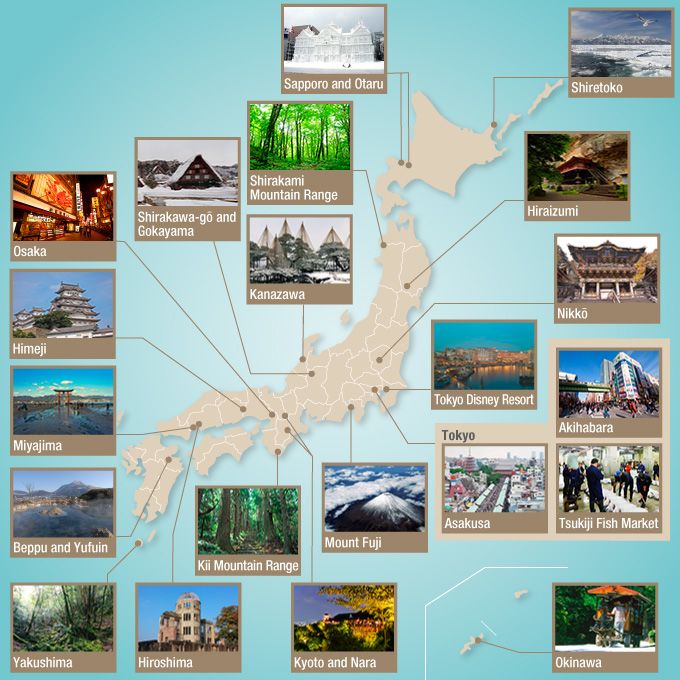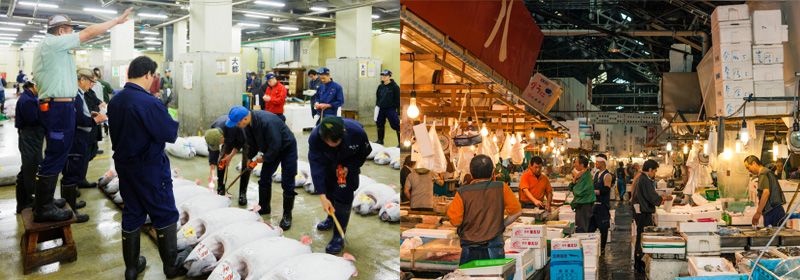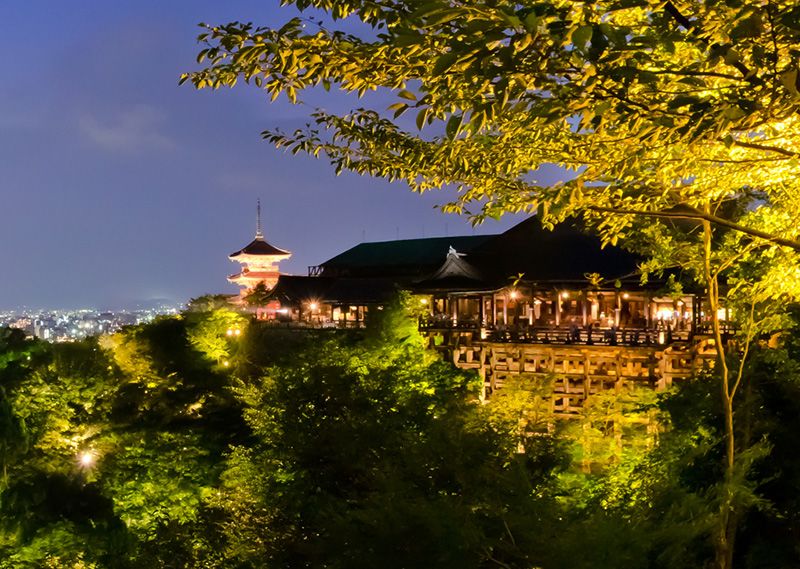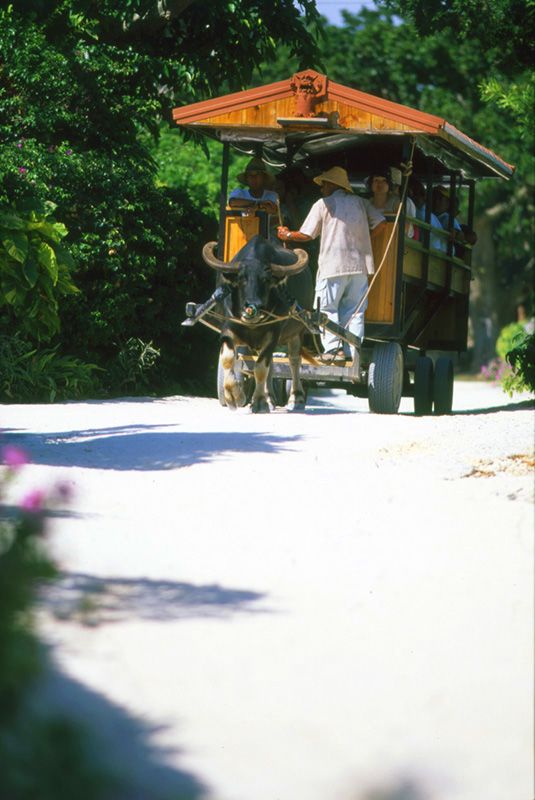
Japan’s Top Tourist Destinations
Culture- English
- 日本語
- 简体字
- 繁體字
- Français
- Español
- العربية
- Русский
Hokkaidō
Shiretoko
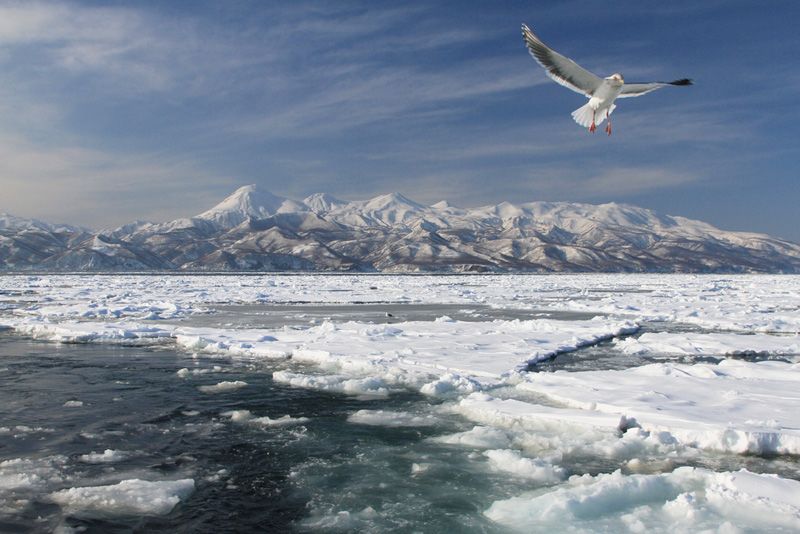 Shiretoko National Park is situated on the narrow Shiretoko peninsula that juts out from eastern Hokkaidō. Travelers who visit this remote region are rewarded with some of Japan’s most unspoiled scenery. The area is known for its wildlife, including brown bears and white-tailed eagles, while drifting sea ice can also be seen in winter. In 2005, Shiretoko was designated a UNESCO World Heritage Site.
Shiretoko National Park is situated on the narrow Shiretoko peninsula that juts out from eastern Hokkaidō. Travelers who visit this remote region are rewarded with some of Japan’s most unspoiled scenery. The area is known for its wildlife, including brown bears and white-tailed eagles, while drifting sea ice can also be seen in winter. In 2005, Shiretoko was designated a UNESCO World Heritage Site.
Sapporo and Otaru
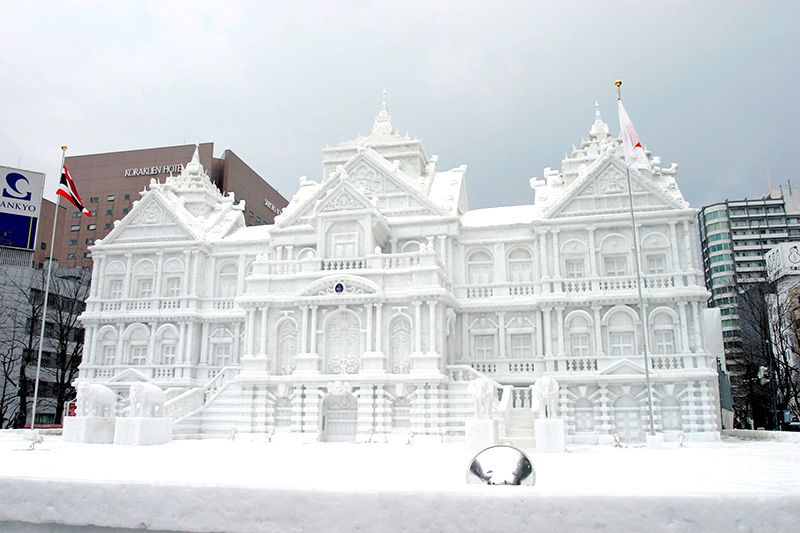 Sapporo Snow Festival (Photo courtesy Sapporo City)
Sapporo Snow Festival (Photo courtesy Sapporo City)
Sapporo is Hokkaidō’s biggest city, with a population of 1.9 million. It is famous for the annual Sapporo Snow Festival in February, which draws over 2 million visitors every year to view the giant snow sculptures in the city’s central Ōdōri Park. Nearby Otaru is a pleasant harbor city with well-preserved canals and brick warehouses from the time of Hokkaidō’s development in the late nineteenth century. Yoichi, the town just to the west of Otaru, is home to the renowned Nikka whisky distillery.
Tōhoku
Hiraizumi
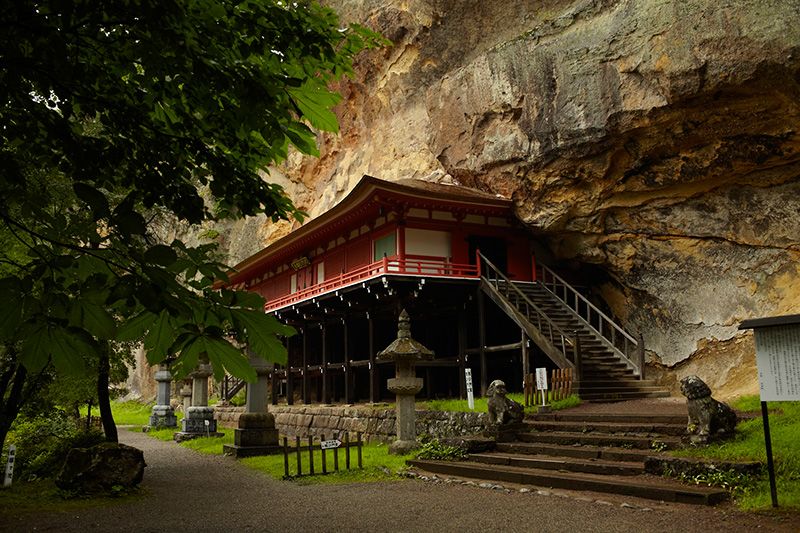 Takkoku no Iwaya Bishamondō Hall (Photo by Matsuda Tadao)
Takkoku no Iwaya Bishamondō Hall (Photo by Matsuda Tadao)
For around a century, Hiraizumi flourished as a major regional center before it was destroyed in 1189. The remains of the Buddhist temples of Chūsonji and Mōtsūji attract tourists to the area today. Chūsonji’s spectacular Golden Hall is decorated with gold leaf and mother-of-pearl, while Mōtsūji’s “pure land” garden is based on the Buddhist concept of paradise. In 2011, Hiraizumi was designated a UNESCO World Heritage Site. (World Heritage: Hiraizumi [Video])
Shirakami Mountain Range
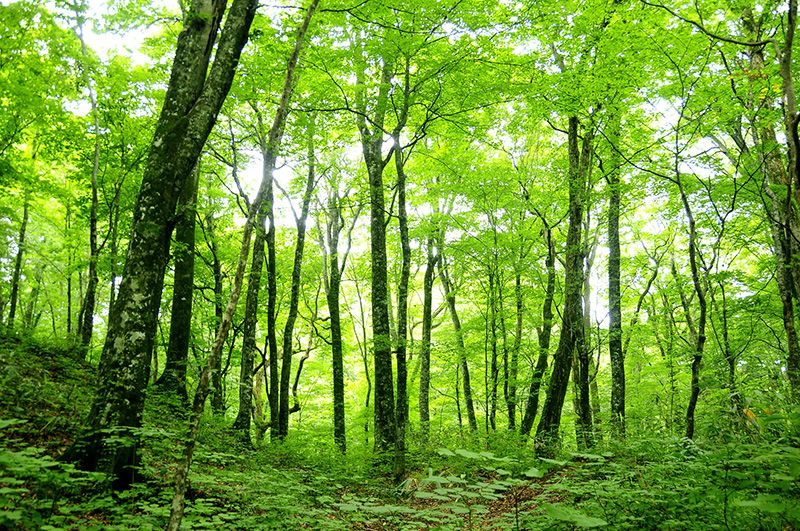 A mountainous region stretching for 1,300 square kilometers across the north of Japan’s main island, Honshū. Its virgin buna (Japanese beech) forest, the largest in East Asia, led to its registration as a World Heritage Site in 1993. The central World Heritage zone is protected, requiring a permit for entry, but there are numerous hiking trails in the rest of the area.
A mountainous region stretching for 1,300 square kilometers across the north of Japan’s main island, Honshū. Its virgin buna (Japanese beech) forest, the largest in East Asia, led to its registration as a World Heritage Site in 1993. The central World Heritage zone is protected, requiring a permit for entry, but there are numerous hiking trails in the rest of the area.
Tokyo and Nearby
Nikkō
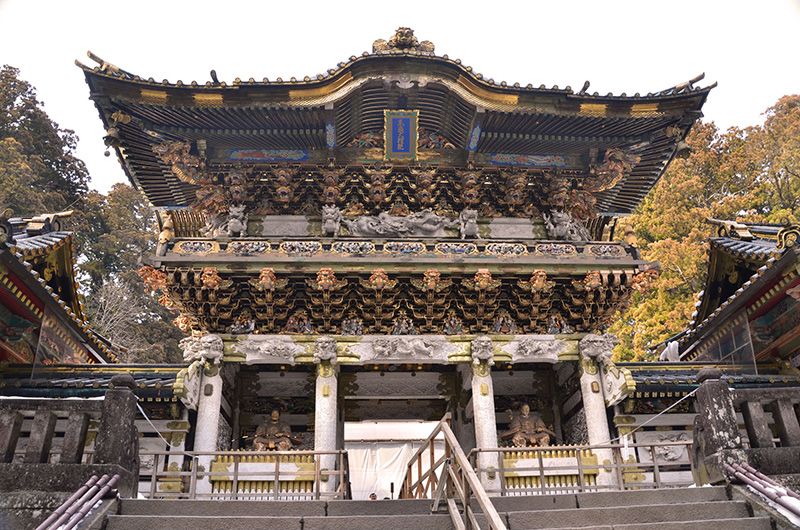 Just north of Tokyo, Nikkō is home to the Tōshōgū Shrine, the mausoleum of the first shōgun of the Edo era, Tokugawa Ieyasu, who died in 1616. Further shrines and temples and the rich, natural scenery make it one of the top destinations of the greater Tokyo area.
Just north of Tokyo, Nikkō is home to the Tōshōgū Shrine, the mausoleum of the first shōgun of the Edo era, Tokugawa Ieyasu, who died in 1616. Further shrines and temples and the rich, natural scenery make it one of the top destinations of the greater Tokyo area.
Asakusa
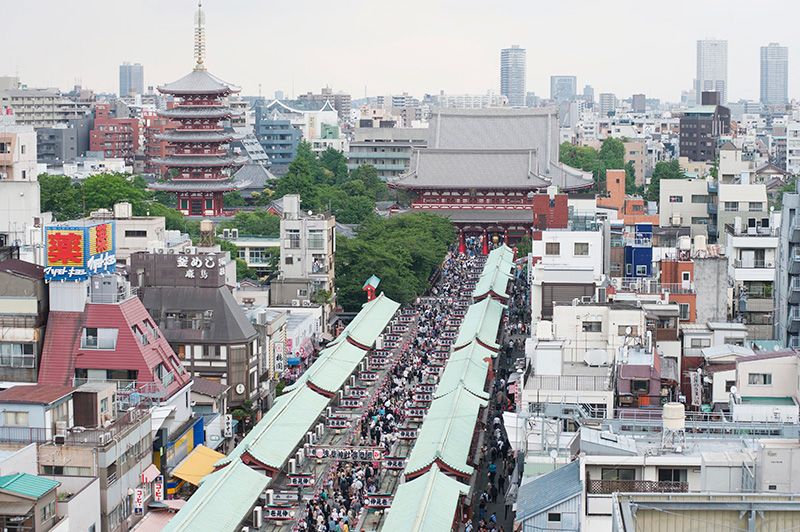 Asakusa has been a popular place to visit since the Edo period (1603–1868) and still preserves some of the spirit of past days. Tokyo’s oldest temple, Sensōji, is a major attraction and also boasts a raucous festival in May. In the surrounding area, there are numerous opportunities to sample local food and buy fans, yukata (casual robes) and other souvenirs. The 634-meter-tall Tokyo Skytree is just a short distance away.
Asakusa has been a popular place to visit since the Edo period (1603–1868) and still preserves some of the spirit of past days. Tokyo’s oldest temple, Sensōji, is a major attraction and also boasts a raucous festival in May. In the surrounding area, there are numerous opportunities to sample local food and buy fans, yukata (casual robes) and other souvenirs. The 634-meter-tall Tokyo Skytree is just a short distance away.
Akihabara
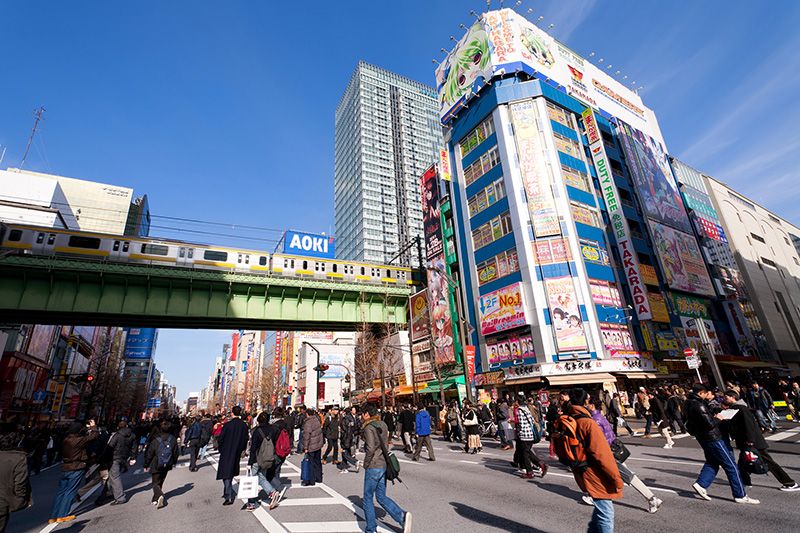 Akihabara has long been famous as Tokyo’s “Electric Town,” a place to buy computers, cameras, and other consumer electronics. In recent years, it has also become a pop culture center for anime and cosplay fans from around the world, with many tourists eager to experience its maid cafes.
Akihabara has long been famous as Tokyo’s “Electric Town,” a place to buy computers, cameras, and other consumer electronics. In recent years, it has also become a pop culture center for anime and cosplay fans from around the world, with many tourists eager to experience its maid cafes.
Tsukiji Fish Market
The world’s biggest fish and seafood market, in Tsukiji, central Tokyo, is most famous for its morning tuna auctions. If you want to see those you need to get there very early, as there are only a limited number of tickets available. If not, there are plenty of other sea creatures on show, and many travelers get a sushi breakfast to round the visit off. (At the time of writing, the fish market is expected to relocate in 2016.) (Sushi Heaven: The Daily Artistry of a Top Ginza Chef [Video])
Tokyo Disney Resort
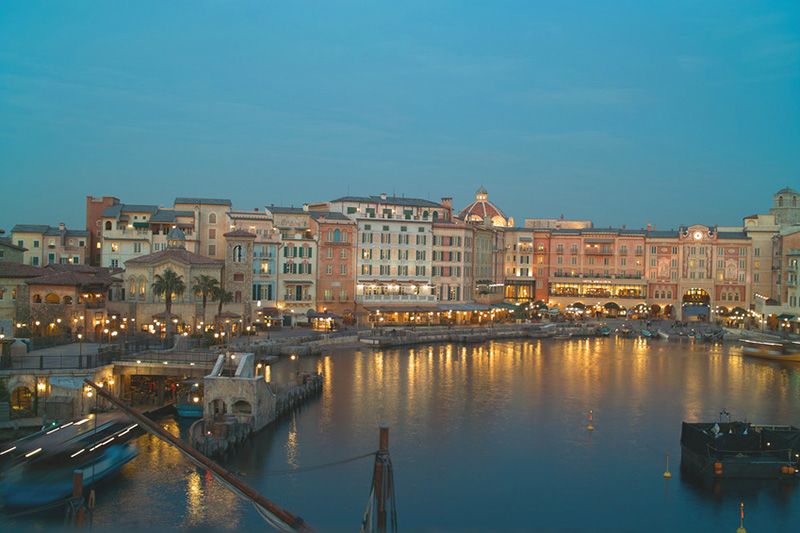 In 1983, Tokyo Disneyland opened. In 2001 it was joined by Tokyo DisneySea, a marine variation unique to Japan. While Disneyland caters mainly to children and families, DisneySea aims to appeal to a slightly older crowd. The resort can be reached directly by bus from Narita Airport and receives more than 25 million visitors a year.
In 1983, Tokyo Disneyland opened. In 2001 it was joined by Tokyo DisneySea, a marine variation unique to Japan. While Disneyland caters mainly to children and families, DisneySea aims to appeal to a slightly older crowd. The resort can be reached directly by bus from Narita Airport and receives more than 25 million visitors a year.
Chūbu
Mount Fuji
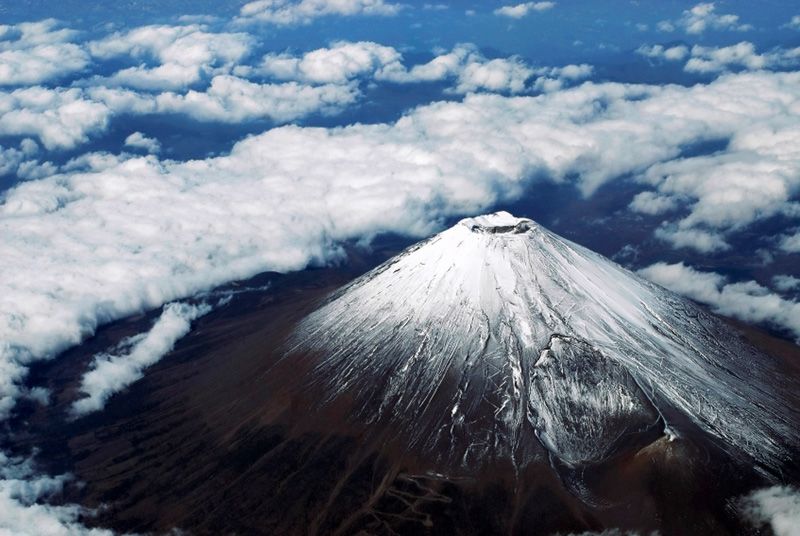 A symbol of Japan, at 3,776 meters, Mount Fuji is also the country’s highest mountain. Climbing season is from July to August; the top of Fuji can be quite chilly, even when Tokyo is sweating. Nearby, Fuji Five Lakes and Hakone provide good views of the mountain as well as the chance to enjoy a bath in the hot springs. In 2013, Mount Fuji was registered as a UNESCO World Heritage Site. (Mount Fuji Through the Lens of Ōyama Yukio [Photos] and Mount Fuji: Where the Spirits Dwell [Photos])
A symbol of Japan, at 3,776 meters, Mount Fuji is also the country’s highest mountain. Climbing season is from July to August; the top of Fuji can be quite chilly, even when Tokyo is sweating. Nearby, Fuji Five Lakes and Hakone provide good views of the mountain as well as the chance to enjoy a bath in the hot springs. In 2013, Mount Fuji was registered as a UNESCO World Heritage Site. (Mount Fuji Through the Lens of Ōyama Yukio [Photos] and Mount Fuji: Where the Spirits Dwell [Photos])
Shirakawa-gō and Gokayama
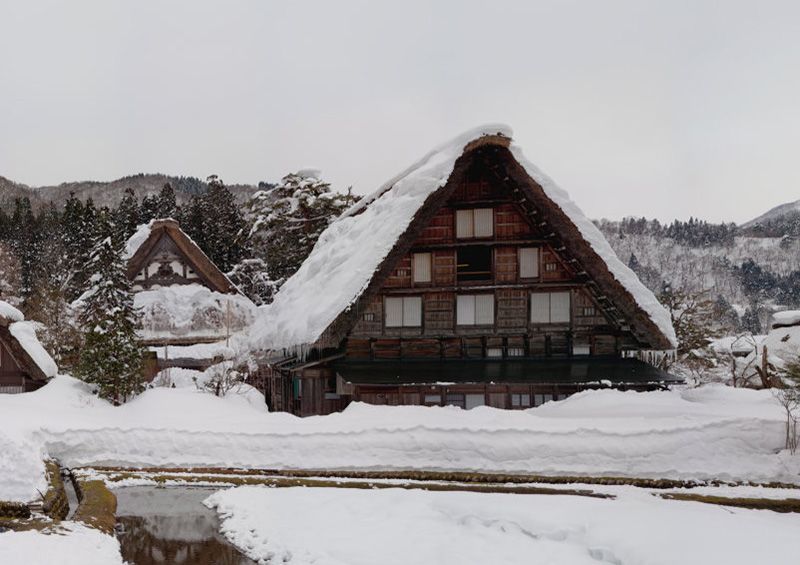 Shirakawa-gō (Photo by Somese Naoto)
Shirakawa-gō (Photo by Somese Naoto)
The farmhouses of Shirakawa-gō and Gokayama have distinctive, steeply sloping thatched roofs to prevent snow from piling up during the harsh winter. The Japanese name for the roofs, gasshō-zukuri, comes from their resemblance to two hands put together in prayer. The villagers prospered by cultivating silkworms in the space under the roofs. In 1995, the villages received UNESCO World Heritage status. (World Heritage Site Shirakawa-gō [360°/Gigapixel])
Kanazawa
Kanazawa is a regional center, best known for Kenrokuen Garden. With its classical features including ponds, bridges, and stone lanterns, it is perhaps the most beautiful of Japan’s “Three Famous Gardens.” There are also geisha and samurai districts to explore in Kanazawa, as well as the “Ninja Temple,” which includes traps and hidden rooms. Craft items made using the city’s gold leaf or regional lacquer techniques are popular souvenirs.
 Kenrokuen Garden (Photos courtesy Kanazawa City)
Kenrokuen Garden (Photos courtesy Kanazawa City)
Kansai
Kyoto and Nara
The former capitals of Nara (710–94) and Kyoto (794–1868) contain a seemingly endless number of impressive temples, shrines, and other cultural properties. Major temples in Kyoto include Kinkakuji (the Temple of the Golden Pavilion), Kiyomizudera, and Kenninji. The tunnels of red gates at Fushimi Inari Shrine are also an essential sight. In Nara, the key locations are the temples of Tōdaiji, which contains a 15-meter-tall statue of the Buddha, and Hōryūji, featuring the world’s oldest wooden buildings.
Osaka
When neighboring Kyoto was the capital, Osaka was the country’s economic center. It is the largest city in western Japan, with a population of 2.7 million. The modern attractions of Universal Studios and Osaka Aquarium are popular tourist draws. The city has a reputation for tasty food, such as takoyaki (deep-fried octopus in batter) and okonomiyaki (a kind of filled pancake). The phrase kuidaore, meaning “eat yourself bankrupt,” is part of the name of the mascot Kuidaore Tarō, a symbol for Osaka.
 Dōtonbori district (Photos courtesy Osaka Government Tourism Bureau)
Dōtonbori district (Photos courtesy Osaka Government Tourism Bureau)
Himeji
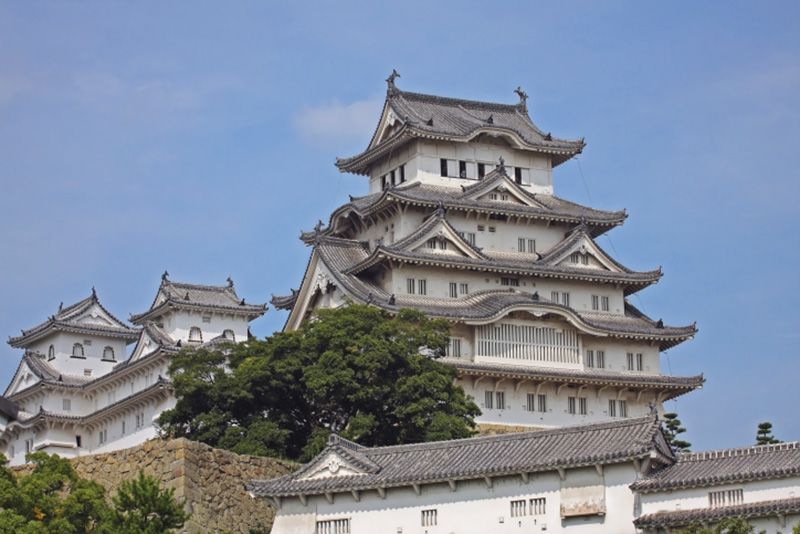 Japan’s most beautiful and best-preserved castle is found in Himeji. It has been dubbed “White Heron Castle” for its brilliant white appearance. The keep, towers, and other buildings date back to the early seventeenth century. In 1993, it became one of Japan’s first sites to gain UNESCO World Heritage status. The castle reopened to the general public in 2015 after the completion of five and a half years of renovation, including replastering of walls and replacement of roof tiles.
Japan’s most beautiful and best-preserved castle is found in Himeji. It has been dubbed “White Heron Castle” for its brilliant white appearance. The keep, towers, and other buildings date back to the early seventeenth century. In 1993, it became one of Japan’s first sites to gain UNESCO World Heritage status. The castle reopened to the general public in 2015 after the completion of five and a half years of renovation, including replastering of walls and replacement of roof tiles.
Kii Mountain Range
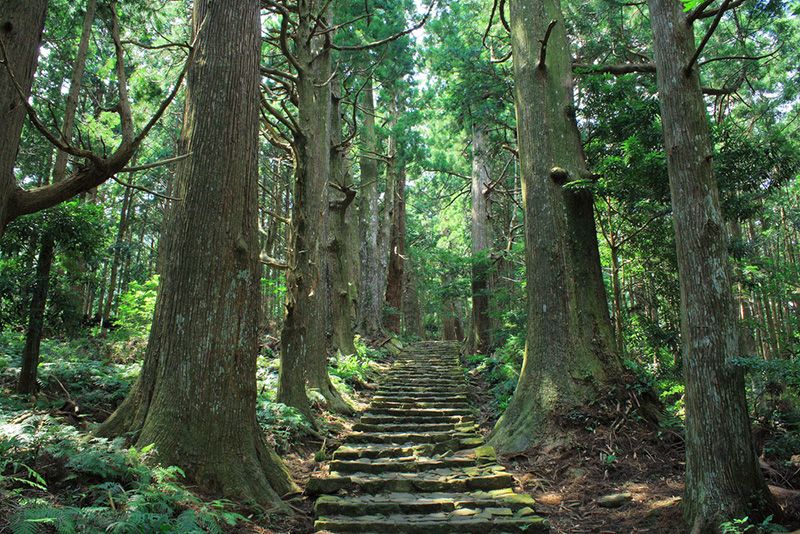 In 2004, sacred sites and pilgrimage routes in the Kii Mountain Range were selected for UNESCO World Heritage status. The region includes temples, shrines, and forest trails in the three main areas of Yoshino, Kumano, and Kōya, south of Osaka and Nara. The tradition of sacred mountains has lasted for over 1,200 years in the region.
In 2004, sacred sites and pilgrimage routes in the Kii Mountain Range were selected for UNESCO World Heritage status. The region includes temples, shrines, and forest trails in the three main areas of Yoshino, Kumano, and Kōya, south of Osaka and Nara. The tradition of sacred mountains has lasted for over 1,200 years in the region.
Chūgoku
Hiroshima
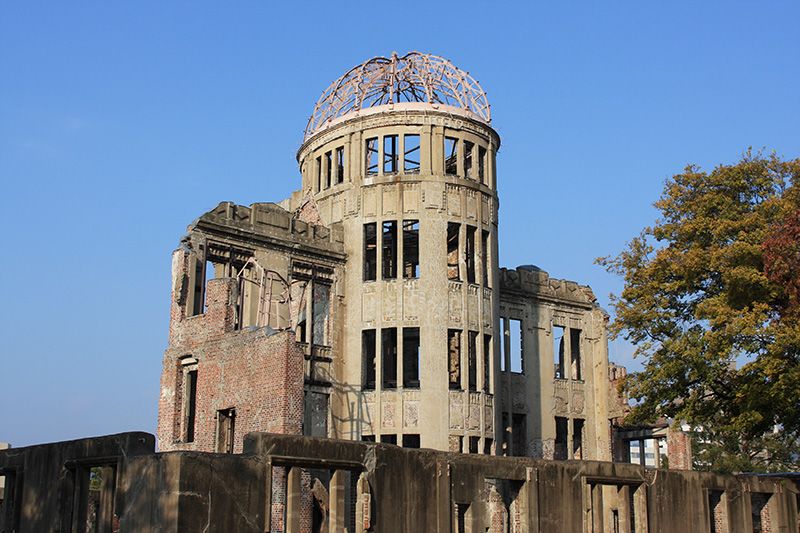 Hiroshima will always be remembered as the site of the world’s first atomic bombing on August 6, 1945. The remains of a building located close to the center of the blast has been preserved as the Hiroshima Peace Memorial. It survived with its structure surprisingly intact and became a symbol for the city, receiving UNESCO World Heritage status in 1996. Beside this is the Peace Memorial Park, with monuments to the dead and a museum documenting the effects of the bombing. (World Heritage: Hiroshima Peace Memorial [Genbaku Dome] [360° Panorama])
Hiroshima will always be remembered as the site of the world’s first atomic bombing on August 6, 1945. The remains of a building located close to the center of the blast has been preserved as the Hiroshima Peace Memorial. It survived with its structure surprisingly intact and became a symbol for the city, receiving UNESCO World Heritage status in 1996. Beside this is the Peace Memorial Park, with monuments to the dead and a museum documenting the effects of the bombing. (World Heritage: Hiroshima Peace Memorial [Genbaku Dome] [360° Panorama])
Miyajima
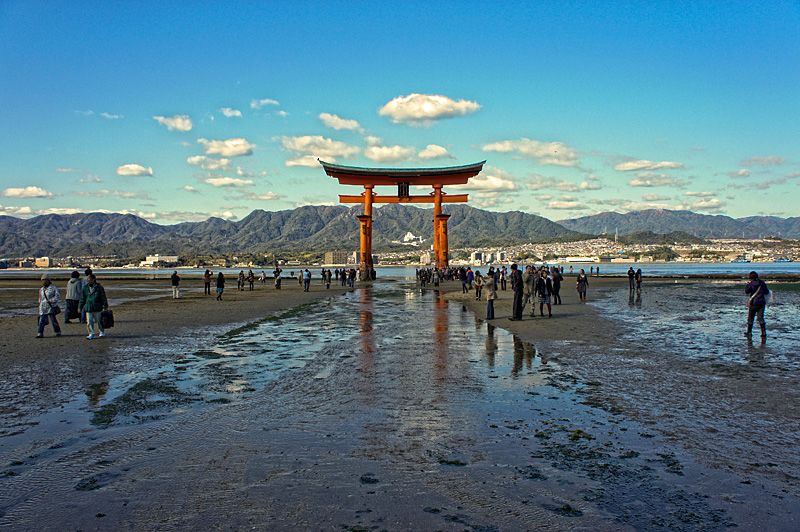 Miyajima is the popular name for Itsukushima, a small island near Hiroshima renowned for its shrine’s large torii gate that appears to float on the water when the tide comes in. Itsukushima Shrine was built in its current form in 1168 with funds provided by the warrior and courtier Taira no Kiyomori. Climb Mount Misen and you may see monkeys, but wherever you go you can expect to see wandering deer. (Miyajima: The Wonders of Japan’s Island Shrine [360˚ Panorama] and World Heritage: Itsukushima Shrine [Time-Lapse Video])
Miyajima is the popular name for Itsukushima, a small island near Hiroshima renowned for its shrine’s large torii gate that appears to float on the water when the tide comes in. Itsukushima Shrine was built in its current form in 1168 with funds provided by the warrior and courtier Taira no Kiyomori. Climb Mount Misen and you may see monkeys, but wherever you go you can expect to see wandering deer. (Miyajima: The Wonders of Japan’s Island Shrine [360˚ Panorama] and World Heritage: Itsukushima Shrine [Time-Lapse Video])
Kyūshū and Okinawa
Beppu and Yufuin
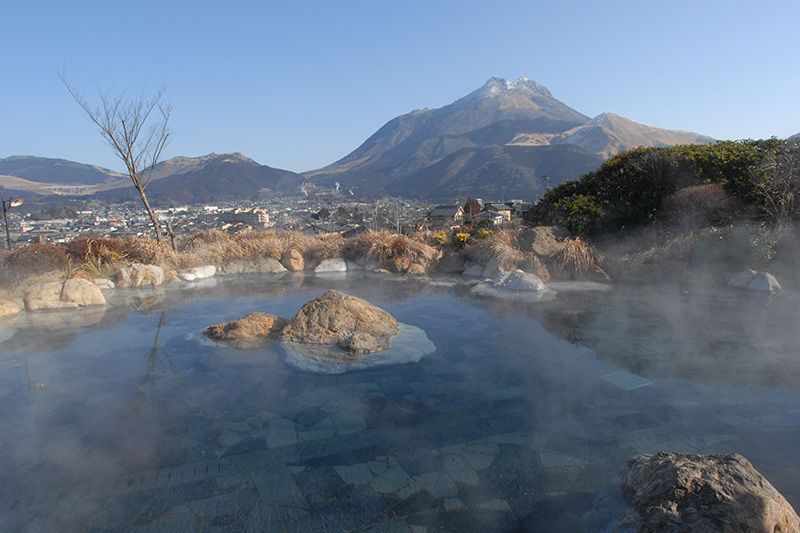 Yufuin (Photo courtesy Ōita Prefecture)
Yufuin (Photo courtesy Ōita Prefecture)
The city of Beppu produces more hot spring water than anywhere else in Japan, but if water is not enough, you can also take steam, sand, or mud baths. The volcanic nature of hot springs is most obvious at the eight “hells,” which are for viewing rather than bathing in. Beppu attracts 8 million visitors annually, so travelers looking for somewhere a little more laid-back and family-friendly head for neighboring Yufuin, also known for its hot springs.
Yakushima
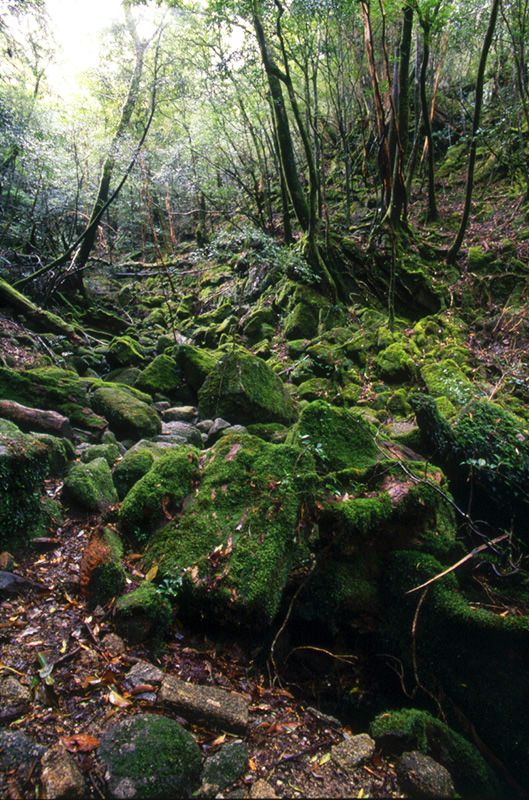 Yakushima is an island south of the Kyūshū mainland with dense cedar forests. Some of the trees are over 1,000 years old; the oldest is estimated to be at least 2,000 years old. Yakushima’s lush and diverse flora was a reason behind 21% of its area being designated as a UNESCO World Heritage Site in 1993. If you visit, be prepared for the rain that is a regular feature of the island.
Yakushima is an island south of the Kyūshū mainland with dense cedar forests. Some of the trees are over 1,000 years old; the oldest is estimated to be at least 2,000 years old. Yakushima’s lush and diverse flora was a reason behind 21% of its area being designated as a UNESCO World Heritage Site in 1993. If you visit, be prepared for the rain that is a regular feature of the island.
Okinawa
Okinawa is the main island in a subtropical island group around 600 kilometers southwest of the Japanese mainland. Before becoming part of Japan, these islands developed their own culture as the Ryūkyū Kingdom. The capital Naha’s reconstructed Shuri Castle offers a reminder of those days. Okinawa is also known for its beautiful sandy beaches, great for snorkeling and diving.
Japan Hiraizumi Miyajima Kyoto Osaka Okinawa Mount Fuji Akihabara Shirakawa-gō Asakusa Sapporo Hiroshima Shiretoko Otaru Shirakami Mountain Range Nikkō Tokyo Disneyland Tsukiji Fish Market Kanazawa Nara Himeji Kii Mountain Range Beppu Yufuin Yakushima
